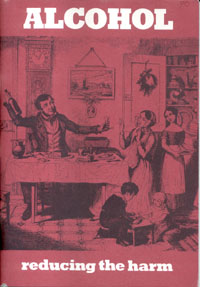Produced easily by fermentation, ethyl alcohol has for at least 5 to 8 thousand years played a part in the development of human civilisation; as a…
Produced easily by fermentation, ethyl alcohol has for at least 5 to 8 thousand years played a part in the development of human civilisation; as a medicine, as a substance endowed with religious significance, as a food and important element in many cuisines,…
Produced easily by fermentation, ethyl alcohol has for at least 5 to 8 thousand years played a part in the development of human civilisation; as a medicine, as a substance endowed with religious significance, as a food and important element in many cuisines, as a fuel, as an economic good and as a disinhibiting/intoxicating drug used to aid social intercourse. It is in this last context that alcohol is most widely employed in the modern world. With the main exception of Muslim societies it is generally accepted as a legal ‘social psychotropic’ for adult use, that is as a self-purchased and self-administered substance taken by healthy individuals primarily for its mind affecting properties.
Even in Britain, still one of the more sober of the developed nations despite a virtual doubling of per capita alcohol intake in the last quarter of a century, the scale of ethyl alcohol consumption can be seen to be enormous if compared to, for instance, that of medically legitimated drugs/medicines. The most frequently prescribed group of the latter substances are the benzodiazapine tranquillisers and hypnotics, some 30 million scripts for which were filled in 1979. The cost to the NHS (£1979) was a little over £30 million. In the same year the British population drank 40 million proof gallons of spirits, 1,500 million gallons of beer and 100 million gallons of wine. This is equivalent to over 17 pints of absolute (pure) alcohol for every individual aged over 15 in the country.
The cost (£1979) to the public was almost £9,000 million.
The use of any pharmacologically active substance to such a degree is likely to be associated with some forms of harm. In the case of ‘drinking’ these include mortality and morbidity from conditions like alcohol related liver diseases and peptic ulcers, the results of driving whilst intoxicated and the many economic and social burdens which may be inflicted on an individual and/or his or her family as a consequence of alcohol dependence. These factors are difficult to quantify accurately, but broad indicators include the estimate that the number of premature deaths associated with alcohol use in Britain is probably in the order of 5,000 to 10,000 per annum and official claims that between 500,000 and 750,000 people in England and Wales alone have some form of serious drink related problem. Even excluding intangible costs of suffering, government economists have recently suggested that the unwanted effects of alcohol consumption may lose the nation around £1,000 million (£1981) a year.
Against this, of course, have to be balanced the desirable aspects of alcohol use. In an ideal world, it could be argued, scientifically acceptable techniques for quantifying the value of drinking and its linked costs would be developed and a policy for influencing alcohol use in the community aimed at optimising the welfare balance introduced. Much concern has been expressed to the effect that recent British policy has failed to control adequately the level of alcohol related harm. For example, an unpublished but widely seen report from the government’s Central Policy Review Staff urged policy makers to introduce, on health grounds, increased taxes on alcoholic beverages, to encourage alcohol treatment facilities in workplaces and to amend the law to permit random breath testing for drivers.
However, the barriers to establishing a rational approach to policy are significant. On the technical level, for example, the methods of quantifying the global social and economic benefits of this form of drug use are still relatively immature. Whilst at the political level, debate and decision making may be influenced by a number of powerful and conflicting interests. These include, first, those of the brewers, distillers and purveyors of alcohol beverages, who do not only contribute to the UK economy by providing up to 700,000 jobs but also export large quantities (about £1,000 million worth) of spirits and provide the State with a significant (currently £3,500 million plus) route for revenue raising. Second, those of the medical and allied professions and the UK Health Departments, which may be genuinely striving to increase the wellbeing of the population but which might sometimes appear to be a little authoritarian or paternalistic. And, third, those sections of the population who for religious or allied reasons believe that drinking is wrong per se.
Against this background this paper seeks to clarify some of the issues relating to the consumption of alcohol in Britain. It describes recent thinking regarding the processes by which harm from the dependence on alcohol are induced, the nature of alcohol as a mind affecting drug and a cause of physical disorders and the various ways in which society and individuals may be protected against its ill effects. Special attention is paid to economic factors, although a wide range of social phenomena, such as the shifting pattern of alcohol consumption amongst the female population and the interaction between the use of medicines and social drugs, are touched on. The overall objective is to help to stimulate and inform public discussion of this important area and to identify those aspects of alcohol usage where disciplined scientific research needs to be further encouraged.
